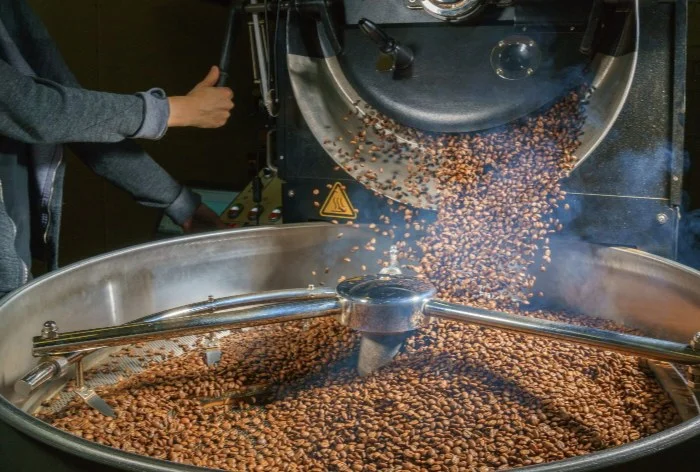Espresso is more than just a strong coffee. It’s a concentrated shot of flavor, aroma, and tradition. One of the most critical factors in making great espresso is the roast level of the coffee beans. But what exactly is the best roast for espresso? The answer isn’t straightforward because it depends on personal taste, brewing methods, and bean origin. In this article, we’ll explore different roast levels, their impact on espresso, and how to choose the best one for your preference.
Understanding Coffee Roast Levels
Before diving into espresso-specific roasts, it’s essential to understand the general categories of coffee roasts. Coffee beans go through different stages of roasting, each affecting flavor, acidity, and body.
Light Roast
Light roast coffee is roasted for the shortest time, stopping just after the first crack. The beans retain much of their original flavor, often showcasing fruity, floral, or tea-like notes. However, light roasts have higher acidity and may lack the body needed for a balanced espresso.
Medium Roast
Medium roast strikes a balance between acidity and body. The beans are roasted until just before or after the second crack, developing caramelized sweetness and a fuller mouthfeel. Many specialty coffee shops prefer medium roasts for espresso because they highlight the bean’s origin while still providing richness.
Medium-Dark Roast
Medium-dark roast brings deeper flavors like chocolate, nuts, and spice. The beans are roasted slightly longer, reducing acidity and increasing body. This roast level is a popular choice for espresso, especially in traditional Italian-style blends.
Dark Roast
Dark roast coffee is roasted well past the second crack, resulting in shiny, oily beans with bold, smoky flavors. While dark roasts are commonly associated with espresso, they can sometimes taste burnt or overly bitter if not roasted carefully.
Traditional vs. Modern Espresso Roasts
Espresso roasting has evolved over time, with traditional and modern approaches differing significantly.
Italian-Style Dark Roast
Historically, Italian espresso favors dark roasts. The high-pressure extraction of espresso balances the intense bitterness of dark-roasted beans, creating a rich, syrupy shot with a thick crema. Brands like Lavazza and Illy use this style, often blending beans from multiple origins for consistency.
Third-Wave Specialty Light to Medium Roast
In recent years, the specialty coffee movement has shifted toward lighter roasts for espresso. Roasters aim to preserve the bean’s natural characteristics, producing shots with brighter acidity and complex fruit or floral notes. This approach is common in specialty cafes that focus on single-origin beans.
Factors Affecting Espresso Roast Selection
Choosing the best roast for espresso depends on several factors, including bean origin, brewing parameters, and personal taste.
Bean Origin
Different coffee-growing regions produce distinct flavors. For example:
- Latin American beans (Colombia, Brazil) often have nutty, chocolatey notes that work well with medium-dark roasts.
- African beans (Ethiopia, Kenya) tend to be fruity and floral, shining in light to medium roasts.
- Indonesian beans (Sumatra, Java) have earthy, spicy profiles that pair nicely with dark roasts.
Brewing Parameters
Espresso machines extract coffee under high pressure (9 bars or more). The roast level affects extraction:
- Light roasts require precise grinding and temperature control to avoid sourness.
- Dark roasts extract more easily but can become overly bitter if ground too finely.
Personal Preference
Some people love the bold, smoky taste of dark roast espresso, while others prefer the nuanced flavors of lighter roasts. Experimenting with different roasts is the best way to find your ideal profile.
Common Misconceptions About Espresso Roasts
There are several myths surrounding espresso roasts that need clarification.
Myth 1: Espresso Must Be Dark Roast
While dark roast is traditional, it’s not mandatory. Many specialty cafes successfully use light and medium roasts for espresso, proving that roast level is flexible.
Myth 2: Dark Roast Has More Caffeine
Caffeine content depends more on bean density than roast level. Light roasts retain slightly more caffeine because prolonged roasting breaks it down.
Myth 3: Only Blends Work for Espresso
Single-origin espresso is gaining popularity. While blends offer consistency, single-origin beans can produce exceptional espresso with unique flavors.
How to Choose the Best Roast for Your Espresso
Selecting the right roast involves considering your brewing setup and taste preferences.
For Home Baristas
If you’re new to espresso, start with a medium-dark roast. It’s forgiving and offers a balanced flavor. As you gain experience, experiment with lighter or darker roasts.
For Commercial Use
Cafes often opt for medium-dark roasts because they appeal to a broad audience. However, specialty shops may rotate single-origin light or medium roasts to showcase variety.
For Milk-Based Drinks
Dark and medium-dark roasts pair well with milk, as their bold flavors cut through the creaminess. Lighter roasts may get lost in lattes or cappuccinos.
Conclusion
The best roast for espresso depends on your taste, brewing method, and coffee origin. Traditionalists may prefer dark roasts for their bold intensity, while modern coffee lovers might enjoy the complexity of lighter roasts. The key is to experiment and find what works best for you. Whether you stick with classic Italian-style espresso or explore third-wave specialty options, the perfect roast is out there waiting to be discovered.
Related topics:
Brao Espresso Coffee: Crafting Excellence in Every Shot
Where to Buy Stovetop Espresso Maker
How Many Ounces of Espresso Beans in a Shot?


